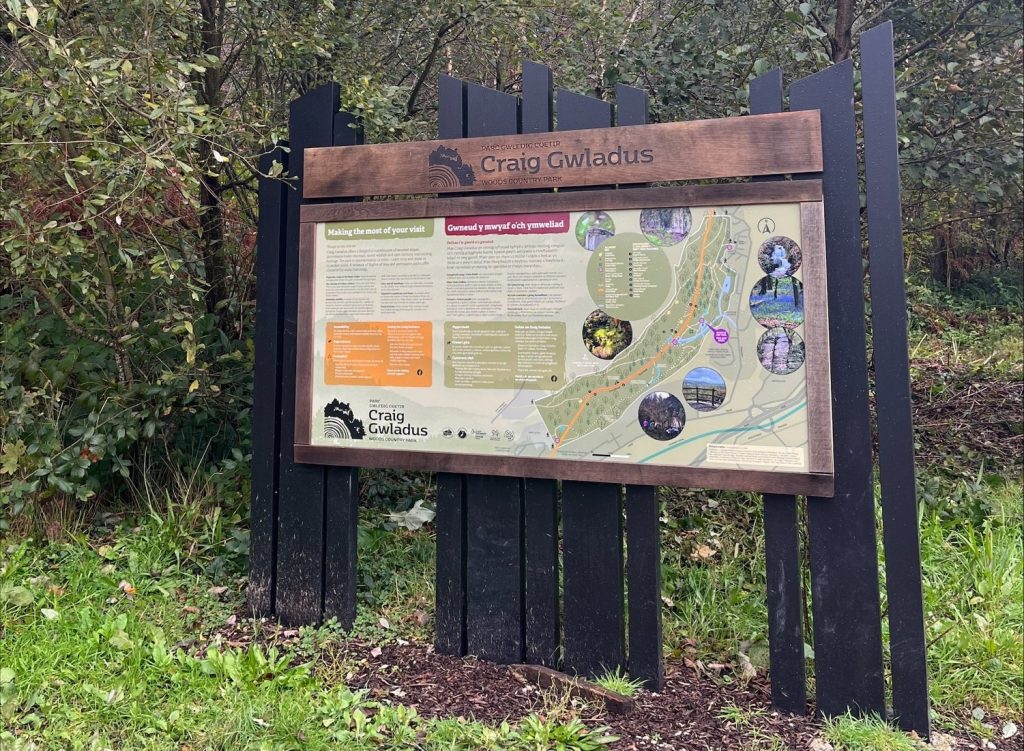
Swansea University’s Alexander Langlands has been working with a range of hyperlocal communities that have united around the protection, preservation, and repurposing of post-industrial heritage sites in the region. As part of our visit, we saw their work at Craig Gwladus country park, near Neath. Previously a site of a major coal mine, the site was an overgrown forest concealing remnants of its heritage before being transformed into a country park. This is thanks in part to the partnership between the Friends of Craig Gwladus volunteer group and Neath Port Talbot County Council. The Friends of Craig Gwladus originally formed in response to crisis, when the Council began clearing the site without consulting local residents. Realising the opportunity the space held for both ecological and heritage conservation, Neath Port Talbot council began working closely with the Friends and a number of other local partners to explore possible uses for the site.
Two members of the Friends of Craig Gwladus, as well as Lisa Kirman – the project manager for Craig Gwladus –shared their hopes for the site. A lot of time in building relationships with a range of partners and seeking funding on behalf of new developments for the park. Alongside acres of forest and trickling streams and waterfalls, sit the ruins of huge industrial buildings, including an old engine house and bridge dating back to the 1800s. One building – the Smithy – has been a central focus for building new community connections. Construction students from Neath College are welcomed to the park to practice and develop sought-after heritage construction skills through the archaeological assessment and stabilising of the ruins.

In Neath Abbey Ironworks, a unique heritage site of world importance, we met the leaders of Friends of Neath Abbey Iron Company. Once the site of a major ironworks, playing a key role in the industrial revolution, the site is the home of two towering blast furnace chimneys that sit alongside a viaduct. The Friends have worked to research the site, including its heritage and bio-diversity, make it accessible to the local community and tell its story. Walking underneath the viaduct amongst the trees are the remains of ironworkers’ cottages nestled next to the river Clydach, meaning the space doesn’t just tell the story of Welsh industry, but of the people that made it possible.
With the recognition the site has received comes great complexity in working with its many stakeholders – the two sites demonstrate the wealth of heritage assets in South Wales, but also the much-needed investment of time, expertise, as well as funding to bring a community’s vision to life. Alex will be working with these groups and others to activate new cultural R&D in pursuit of this shared vision for heritage in the region.
Over the coming months, Creative Communities will share a blog from each of our Community Innovation Practitioners detailing their individual research. Visit our CIP webpage for more information or find more about Dr Lauren Baker Mitchell’s work across the site.
Brought to you by


